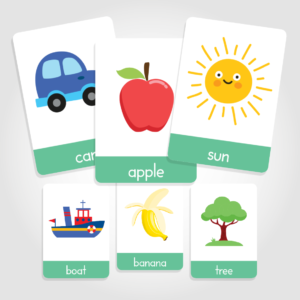How would the Dual Coding Theory change how you create PowerPoint presentations?
The Dual Coding Theory is based on the fact of people have the simultaneous presentation of information in visual and verbal forms that can enhance memory and recognition. In “Dual coding theory and education”, Allan and James said, “The human cognitive system is composed of two sets of codes, Verbal Code and Nonverbal Code.” These two codes help people understand the knowledge easily.
In my own experience, I believe the Dual Coding Theory affects me a lot in my childhood time. Same as other children, flashcards are important tools to help children learning. These cards might be a good example of the Dual Coding Theory. The flashcards have both verbal codes “pictures” and nonverbal code “words”.

Before I learned from the Dual Coding Theory, I usually put a paragraph on each slide of my PowerPoint. In my opinion, I would like to make my PowerPoint as clear and exhausted. Even though these words are important, my audiences are hard to catch my points, because people can not memory all the information in a short time.
Based on the Dual Coding Theory, when I created powerpoints or blogs, I need to find some pictures, sounds and videos which are relative to my opinion. Each slide might have some keywords (no more paragraphs) with verbal codes. By words and media help, my audiences have more chances to understand my ideal, then it deepened the audience’s impression of the powerpoints.
Reference:
Clark, J.M., Paivio, A. Dual coding theory and education. Educ Psychol Rev 3, 149–210 (1991). https://doi.org/10.1007/BF01320076

Leave a Reply
You must be logged in to post a comment.